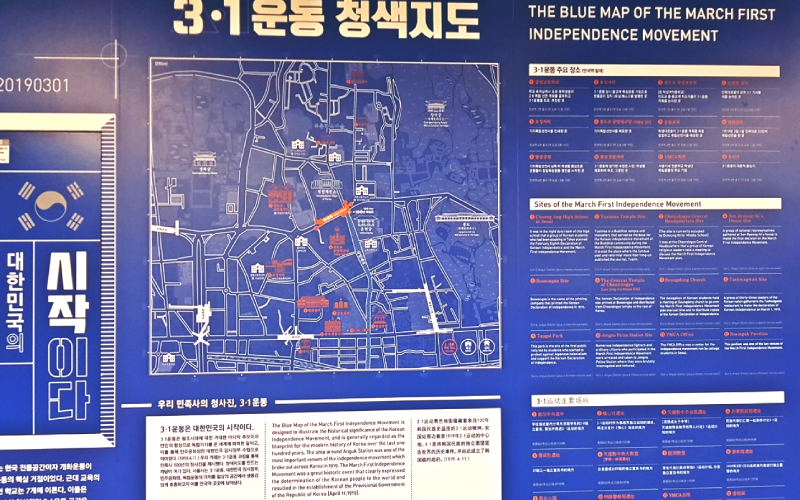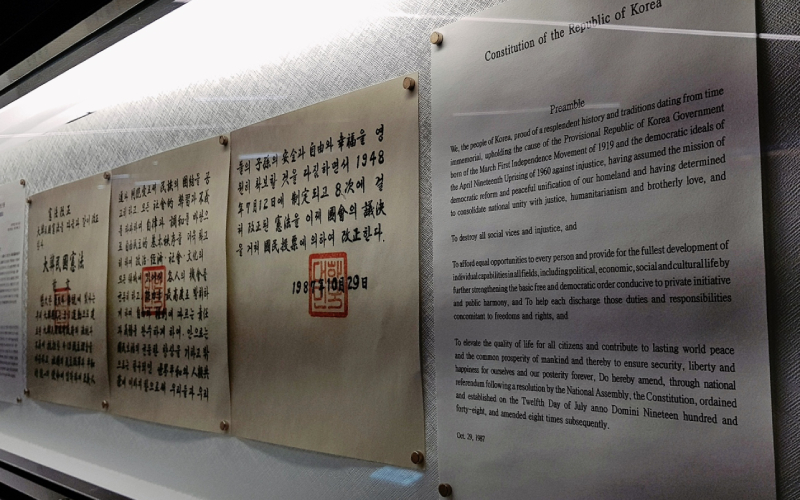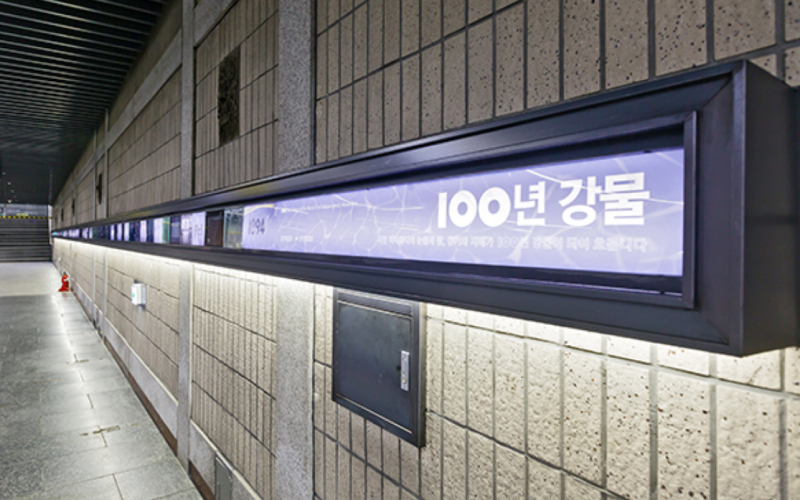- 한국어
- English
- 日本語
- 中文
- العربية
- Español
- Français
- Deutsch
- Pусский
- Tiếng Việt
- Indonesian
By Honorary Reporter Nadine Postigo from Philippines

(Seoul Metro)
The subway system in Korea is an affordable and convenient means of transportation but aside from its main purpose, a subway station is also a place I look forward to exploring due to the things I can do and discover there. In addition to shopping, seeing the birthday ads of Korean artists and dining, subway stations are also good for learning about Korean history.
As I was waiting for a friend at Anguk Station in Seoul, a bright blue wall captured my attention. Little did I know that the information written on the wall would move me.

(Nadine Postigo)
Seoul Metro renovated part of the station into what looks like a small yet detailed museum dedicated to the March First Independence Movement, which occurred in 1919 as a grassroots campaign to demand Korea's liberation from Japanese colonial rule. The blue map on the wall illustrates major areas around the station (including locations in Bukchon Hanok Village and Insa-dong) that played a critical role in the movement.
The central headquarters of Cheondogyo (Religion of the Heavenly Way), which is now Duksung Girls' Middle School, was where religious leaders and Cheondogyo independence activists held secret meetings to plan the movement. Bosingak Pavilion is another historical site crucial to the movement, though it is now a go-to place to spend New Year's Eve for the bell-ringing ceremony. Other nearby venues include Choong Ang High School (where a memorial hall was established), Tapgol Park (where students held the movement's first public rally), Central Temple of Cheongdogyo, Seungdong Church and Yusimsa Temple. The station even has directions to the sites so that visitors can conveniently tour the area and learn of its rich history.

(Nadine Postigo)
The Korean Declaration of Independence and the Republic of Korea's Constitution are also featured on the wall. Prominent independence fighters who bravely and selflessly sacrificed their lives for their nation's freedom can also be seen around the station.
The tears, the unity, the camaraderie, the fight for independence through secret meetings and nonviolent protests, the sacrifices, the waving of the national flag and the shouts of joy over liberation after experiencing all the oppression. I cannot imagine how it must have felt at that time.

(Seoul Metro)
I would've never guessed that I could learn so much at a subway station. There's no need to go to a museum as the Seoul municipal government has made information like this so accessible to the public.
I'm always amazed how Korea emphasizes the importance of its history and culture despite the country's rapid development. I have the utmost respect and admiration for the Korean government's ways to educate foreigners and remind nationals of how the country's past has shaped its present and the lessons learned from it.
chaey0726@korea.kr
*This article is written by a Korea.net Honorary Reporter. Our group of Honorary Reporters are from all around the world, and they share with Korea.net their love and passion for all things Korean